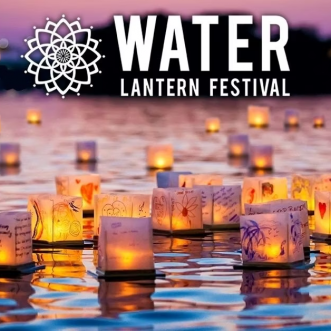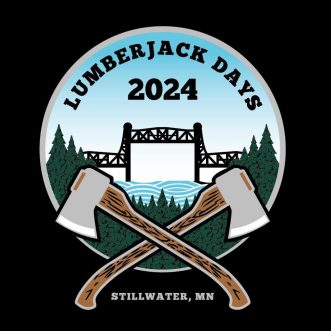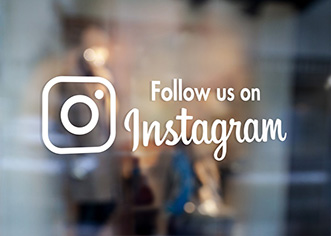Photo: Emily-Utne
Thank you to our models: Frozaen Pissás, BE., Noah Lawrence-Holder, Raquelle, Puffy, Victor Samuels Farmah, Tatum Vanyo, Sterling Miller, Dom Dates, and New Black City dance group: Mimi Solis, Destiny Anderson, Zhane Jackson, Luis Nufio, Lydia Jones, and Mary Hayes.
Remember: The first Pride was a riot.
It wasn’t sponsored by Walmart and Coca Cola. Comcast didn’t wave a rainbow flag. There certainly wasn’t a Wells Fargo float.
That first Pride, in 1969, was an uprising led by queer people of color. It was a rebellion, and it began with a police raid on a New York City gay bar that was a home to many of the queer community’s most marginalized members: homeless youth, Black trans women. There were six nights of unrest. It was a turning point for the gay rights movement.
Plenty of people have been quick to condemn the protests that followed George Floyd’s murder at the hands of Minneapolis police. Burning buildings isn’t the “right” way to do it, they say. Smashing windows doesn’t “actually” do anything.
But the riots at Stonewall are just one example that shows: It works. So this year, to celebrate Pride, we’re taking a look back at some of the queer acts of civil and not-so-civil disobedience that have transformed the Twin Cities.

1. FREE and the fight to end workplace discrimination
Minneapolis became the first city in the country to pass a non-discrimination ordinance in 1975, thanks in part to Twin Cities activists—including members of the student group FREE (Fight Repression of Erotic Expression)—who had been advocating for fair employment practices for years.
One of FREE’s first major actions came in 1970, when the State Services Radio for the Blind fired a man named Thom Higgins after he told his boss he was gay. About 30 people picketed Higgins’s employer, in an act Minnesota Historical Society historian Noah Barth, who made a documentary about the radical queer student group, calls “somewhat revolutionary.”
“It’s coming a year now—a little under a year—after Stonewall. So pretty early on, but also, like, in Minnesota,” Barth says. There were other groups advocating for gay rights at the time, but not a lot of that work was happening in the Upper Midwest.
Even within FREE, Barth says, there was uncertainty about how to protest. The group had its “radical hippie types,” but also more moderate members of the gay establishment who thought it was better to go by the book: write petitions, study law, run for office. “They thought they would scare people with direct action.”
“They were trying to identify what a gay rights movement would look like,” Barth says. “It’s 1970. They’re defining it as they go. They know what other movements look like, but this is not like other movements… they were afraid of alienating a lot of the people that would contribute to their organization by doing something so public and so abrasive.”
But other public efforts toward ending job discrimination followed. For a campaign to bar anti-gay companies from recruiting at the U, FREE sent out letters to employers throughout Minnesota asking if they’d hire an openly gay person. One of those employers was Honeywell, which said: Nope. “They put so much pressure on… that eventually Honeywell yields,” Barth says.
And there was a rally for Mike McConnell, who married FREE president Jack Baker in 1971, making them the first legally married same-sex couple in the history of the United States. McConnell, who had been hired by the U of M libraries, had his offer rescinded by the board of regents when they found out. So FREE demonstrated again, this time in front of Morrill Hall.
That hall, it should be noted, has historically hosted powerful acts of dissent. In 1969, Black students occupied Morrill to protest institutional racism at the U, eventually leading to the founding of the African American and African Studies Department (one of the nation’s first). Most recently, it’s where students gathered to get Minneapolis Police off campus.

Anita Bryant, post-pie
2. The pie-ing of Anita Bryant
It’s one of the most satisfying two-minute clips on YouTube. Notorious anti-gay activist Anita Bryant is on a panel in Des Moines discussing her work to end protections for “the homosexuals.” Out of nowhere, a fruit pie flies across the screen, splattering all over her bigoted face.
This is in 1977, and the “Save Our Children” campaign is in full swing. The group wanted to overturn new laws around the nation protecting gay people from discrimination, and Bryant—a former beauty queen and Christian singer who was also the face of Florida Orange Juice—was its most prominent spokesperson. “She had a kind of celebrity that was very much tied to conservative, right Christians,” explains Kevin Murphy, one of the editors of Queer Twin Cities.
“At the center of their agenda was this idea that gay men, especially, would recruit children,” Murphy explains. “They can’t procreate by themselves, so they need to increase their numbers through recruitment.” (They were also early proponents of the whole, “if we let men marry each other, where does it end—with people marrying Saint Bernards?” line of thought.) Save Our Children was working to reverse ordinances around the country that protected gay rights, and with some success: They helped overturn a Miami-Dade County law that banned discrimination in areas like housing and employment.
One of the places Bryant targeted was St. Paul, which had passed civil protections on the basis of sexual preference in 1974. A Twin Cities gay rights group called the Target City Coalition didn’t love that. “They were radical in the way they protested—you could see the kind of street, performative politics… Target City Coalition believed in the kind of protesting that would get a lot of media attention and public attention through spectacle,” Murphy says. And what better way to do that than with pie?
“Pie-ing is spectacular, right?” Murphy laughs. “It’s an act that gets attention, it has some humor, there’s an element of camp. It’s in the tradition of throwing cream pie in people’s faces that comes from, like, the Three Stooges, and vaudeville. It’s made for media culture.”
Thom Higgins wasn’t just the poster boy for workplace non-discrimination… he’s also the activist who splattered Bryant with pie. Thom and co. did a few famous pie-ings—they pied the Catholic Archbishop of Minnesota, to somewhat mixed public reaction—but this one was huge.
“That clip was featured on Saturday Night Live, in the Weekend Update segment. It immediately got a lot of attention,” Murphy says. “And that clip, in the age of the internet, it’s circulated so widely that it’s become influential on its own.”
Again, there was concern within activist groups that the tactic was inadvisable, that embracing radical queer politics would turn people against their cause. And in fact, Save Our Children did manage to overturn protections for gay people in St. Paul.
“In the immediate sense, it was not successful,” Murphy said. “In the longer-term sense, though, it was very successful, in that if politics are debated and understood within the realm of popular culture, then finding ways to engage the media and popular culture in protest can be very effective.”
3. The creation of the Women’s Studies Department at the University of Minnesota
In the mid-1960s, Toni McNaron was a professor in the English Department at the U of M. It was a time of great protest—for the establishment of ethnic studies and women’s studies departments, against the Vietnam war—and there was a lot of talk about whether or not feminism needed to formally come to the university.
“That interested me, because I had been going to study groups, both lesbian and plain-old feminism, around the city with other people,” McNaron says today.
A group of grad students asked McNaron if she’d polish up their proposal to establish women’s studies at the university and take it to the academic powers in place. She gathered a few faculty members who were willing to help show the enthusiasm was there, and… it worked. Sort of.
“We got approved as a program,” McNaron says—but not as a department. “Now, what you need to know is that was how the university generally thought it could say ‘yes’ to something, but it would go away eventually because there wouldn’t be enough support.”
Students asked McNaron if she would be the first women’s studies… “person,” McNaron chuckles. “You couldn’t be called a chair, because you didn’t have a department.” They gave her a desk in a room in the college of liberal arts and “about a third of a secretary’s time.” And then, she began trying to find a list of dates for when she had to have course descriptions in.
“If there had not been incredible support by a lot of secretarial staff, we never would have made it past the first year.” McNaron says she would get phone calls saying the deadline had passed, but the secretaries wouldn’t tell anyone. “There were all these marvelous staff women who saw in this thing something that had to do with them.”
And the minute courses opened, they were full. Within two years the “program” became a department; in another two, it was allowed to have a major and a minor rather than a concentration. And shortly after that, it became the first non-coastal graduate women’s studies program in the country.
“What began to happen is the lesbian component of this bunch of people began understanding that it wasn’t enough to have just a week, or a book, or a couple of books—that there really needed to be something that began to raise more complicated issues,” McNaron says. At the time, she was still closeted. Not in her personal life; she’d meet with out groups to talk about and share ideas. “But at the university, I was petrified.”
When she taught “Introduction to Women’s Studies,” she’d refer to lesbians as “they.” But eventually, with the support of her friends (and after making the decision to get sober), she came out in front of a class.
“I have a feeling no more than about 15 of them even heard the difference when I said ‘lesbians, we,’” McNaron says. “But I heard the difference, and my friends heard the difference, and it was an incredibly important moment for me.” She started working to bring more queer ideas to campus, and told the English Department she wanted to teach lesbian literature.
McNaron was the first out professor at the university, followed shortly by Allan Spear, who became one of the first openly gay Americans in elected office in 1974. McNaron is now a professor emeritus of English at the U and the author of several books, including Poisoned Ivy—which is about lesbophobic and homophobic bullying in academia.

McDonald, left, and Minneapolis City Councilwoman Andrea Jenkins take selfies together at a 2016 fundraiser.Star Tribune
4. The Free CeCe Movement
The movement to free CeCe McDonald was a seminal moment in trans history and activism—not just in the Twin Cities, but around the world.
“I think one of the cool things about the CeCe McDonald story is… it really helped, I think, create some intersectionality between the Black Lives Matter movement and the trans rights movement,” says Minneapolis City Council member Andrea Jenkins, the first Black openly transgender woman elected to public office in the United States.
It was in June 2011, around midnight, and CeCe, a Black trans woman, was walking with friends to the Cub on East Lake Street. Outside of the Schooner Tavern—right by the Third Precinct, Jenkins notes—they encountered a group of people who hurled racist and transphobic slurs at them.
“They were pretty lit up. And they were white supremacists. I mean, one guy had a swastika tattooed on his chest,” Jenkins says. They started throwing punches; one slashed CeCe across the face.
At the time, CeCe was a fashion design student at MCTC, so she had a pair of scissors in her backpack—“not to mention that Black transgender women need to be able to protect themselves.” And, well. The man, Dean Schmitz, died of stab wounds to his chest.
“Literally, this is the same time George Zimmerman is on trial for claiming to ‘stand his ground’ against Trayvon Martin,” Jenkins explains. “It was literally the same time. But here in Minnesota, Mike Freeman, the county attorney who’s still county attorney now, said that CeCe had a duty to retreat.
CeCe was charged with two counts of second-degree murder. She was convicted of second-degree manslaughter and sentenced to 41 months. And she was sent to a men’s correctional facility in St. Cloud.
“But that sparked an international movement around trans rights,” Jenkins says. LGBTQ organizations around the country wrote letters to Mike Freeman in support of CeCe. One of the most famous trans people at the time, the revolutionary activist Leslie Feinberg, took up the cause, and was arrested for spray-painting “Free CeCe Now” on the Hennepin County Courthouse. Laverne Cox made a documentary about her struggle.
“CeCe led that,” Jenkins says. “From jail. She sparked her own movement.” And on January 13, 2014, she was released, after serving 19 months. (Cox was among those who greeted her at prison; she later says she envisioned her Orange Is the New Black character as an homage to CeCe.)
“CeCe was a survivor,” Jenkins says. “So far 15 trans women this year have not survived. They have been killed. Twenty-eight trans women last year. Twnety-six the year before that. The numbers just keep rising. One hundred and seventy-two trans people have been murdered since 2013, and 73 percent have been black. The violence is real.”
Black trans woman Iyanna Dior was just brutally beaten in St. Paul during the protests, as people stood around watching and filming the attack.
“The statement that Black Lives Matter—it has to be all Black lives,” Jenkins says. “Transgender people are Black lives. We have lots of work ahead of us.”

Scenes from the first Gay Pride Block PartyTom Sweeny
5. Gay Pride v. the City of Minneapolis
“It is hardly known —except by a few scholars and those who lived through the events—that in 1980 and 1981 a small group of determined persons in Minneapolis fought, and eventually won, the right to hold a Gay Pride block party on the city’s leading thoroughfare over the opposition of almost the entire Minneapolis political establishment.”
So civil liberties lawyer Norman Dorsen writes in the instantly grabbing preface to Jason Smith’s 2011 book Gay Pride v. The City of Minneapolis.
As Dorsen notes, the story is simple enough. Local gay rights organizations wanted to hold a parade on Hennepin. The city repeatedly denied their requests, even though other groups and businesses had been allowed to shut down the street for their causes and companies over the years. Activists went up against the city, and on Friday, June 26, 1981, following an “exhausting three-year struggle in a federal courtroom,” the city’s first Gay Pride Block Party was held.
“I was nervous that night, but also tremendously excited,” recalls Claude Peck, a Minneapolis-based writer and editor and Target City Coalition member who fought in favor of the party at the time. “After years when gay men gathered mainly in windowless gay bars, this giant celebration took place outside, on Hennepin, where the Aquatennial and dozens of other groups had been granted permits.”
Peck remembers that they didn’t have a ton of planning time between the favorable ruling and the event itself, which meant a lot of it was organized and publicized at the last minute. “I rented a flatbed truck, literally tied the punk band Urban Guerillas onto the back of it with their equipment, and drove around the corner from Fourth Street onto Hennepin Avenue in front of the Gay 90’s,” he says.
It sounds like a lot of fun, right? And it was! Peck remembers the crowd going wild, the music, the passionate speeches by Brad Golden of Target City Coalition and Matt Stark, the “pugnacious heterosexual MCLU director who by then had led several other landmark court fights for gay rights in Minnesota, often without the support of DFLers.” (In fact, it was the DFL-controlled Minneapolis City Council that had been blocking Block Party permits for years.)
But the event was a lot more than just a big party on Hennepin. In his book, Smith argues that this was a turning point in gay rights organizing in the Upper Midwest and a factor in shifting public attitudes about homosexuality and civil rights.
“On one side of the issue were Gay activists and their straight allies and supporters who wanted immediate recognition and support of their rights by society and its institutions of power,” Smith writes. “On the other side were City Council members who opposed any recognition of Gay rights, and conservative Gay leaders who favored a ‘go-slow’ approach that they hoped would, little by little, lead to greater acceptance of Gay men and Lesbians by society.”
As Peck puts it: “The party was also a precedent.”

Claude Peck
6. The quiet revolution of POC queer community-building
Something you’ll quickly notice about the written and recorded queer history of the Twin Cities is that it’s very, very white.
Jason Jackson remembers looking for Black queer history and talking to Stewart van Cleve, author of Land of 10,000 Loves: A History of Queer Minnesota. “Me being bold, I was like, ‘I’m kind of curious to know what were you able to find around Black queer history in the Twin Cities?’ And he was like, ‘Unfortunately, there isn’t a lot of information.’”
Jackson, who’s now a Diversity and Inclusion Consultant at HealthPartners, knew that just because the information wasn’t readily available, that didn’t mean it didn’t exist. So he started looking into the hidden Black queer history of the Twin Cities, digging into the archives and hunting down old news stories. Eventually, he put together a project called “Unheard Voices: Black LGBT History in the Twin Cities.” (It’s available today in the U of M’s Tretter Collection in Gay, Lesbian, Bisexual and Transgender Studies.)
“I started to ask myself the question: What is Black, queer Minnesota? What are the stories I wouldn’t know about the place I now call home?” Jackson asks. “Where are their faces? Where are their voices? Where were they?”
Jackson explains that much of Minnesota’s early Black queer organizing is the kind of stuff that didn’t make it into periodicals. “These organizations may have not had 501c3s, you know?” Jackson explains. “They were kitchen-table organizations. Who’s going to give us a 501c3 for Black Pride in the ’80s?” They were more like social support networks, fundraising and hosting events, sure, but also lifting each other up and making one another feel heard.
One of those groups was Taranga, which became a space for Black queer men just to be in community with each other. Black men were still targets of discrimination within the gay community in the late ’80s and early ’90s (and, let’s be honest, are to this day). Jackson heard from men who were routinely asked to show three pieces of ID to get into gay bars, who were hassled in ways their white counterparts weren’t.
There was also the organization Men of Color, which Jackson describes as “the welcome wagon”—if you were a gay person of color who moved to town in the ’90s, they’d know about it, and make sure someone reached out, came to visit, made you feel part of the community.
Then there was the group Women of Color Stirfry. “It was social and philanthropical, in a way,” recalls Stirfry’s Rosanna Hudgins. “We wanted to give back to community… it was a way to connect with other queer folks of color, and we tried to give back to community in whatever way we could.”
Some of those donations went toward producing My Girlfriend Did It , a groundbreaking film produced by Casa de Esperanza that’s one of the first training videos on on woman-to-woman intimate partner violence. Hudgins was also the statewide coordinator for same-sex domestic violence for the Minnesota Coalition Against Sexual Assault—the only person of color on the staff—and the video has been lauded for its focus on racial diversity and lesbian point of view in 1995. Hudgins is also responsible for bringing Audre Lorde to speak at a women’s studies conference at the U.
This kind of activism doesn’t have the spectacle of tossing a pie in someone’s face, doesn’t have the flair of a parade down Hennepin. Black activists in the movement’s early days had to work within systems that were safe, that worked for them. Because to even be queer and a person of color is radical.
“I remember segregation,” says Hudgins. Growing up in Kansas City, “We were taught as kids, if we were playing outside, if you saw a bunch of white people coming your way to split and run. Kids would disappear. Adults would disappear. They’d turn up dead somewhere.”
“Queer black people and queer people of color—having to push up against racism within the queer community, and homo- and transphobia within all communities—we always find ways to take care of ourselves and each other,” Jackson says. “It feels really authentic, it feels like when I ask you how are you, I actually mean how are you? It means I’m going to take care of you, because I see you in myself.”
“It’s not going to get on the cover of Time magazine, and that’s okay. That’s not the point. The point is to survive.”







